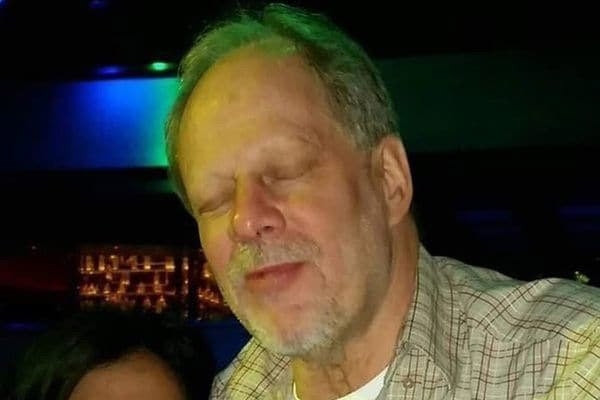Brain of Las Vegas shooter Stephen Paddock had 'no abnormalities' as his motive remains a mystery
Paddock's body being sent to Stanford University for deeper analysis.
The gunman who sprayed more than 1,000 bullets into a Las Vegas country music concert also took shots at jet fuel tanks and targeted police officers responding to the scene, investigators said Friday 13 October in portraying a killer who seemed determined to inflict even more carnage than the 58 people he murdered. They also said a coroner reported "no abnormalities" in his brain.
Investigators gave more details on the chronology of events surrounding the shooting and pushed back against criticism that they were changing their story. Shifting accounts about when Stephen Paddock fired his first shots in his 32nd floor Mandalay Bay suite have led to questions about whether police could have done more to stop him on 1 October.
"In the public space, the word 'incompetent' has been brought forward," Clark County Sheriff Joe Lombardo said. "I am absolutely offended with that characterisation."
In a chronology provided Monday, Lombardo had said Paddock started spraying 200 rounds from his suite into the hallway of the Mandalay Bay at 9:59pm, wounding an unarmed security guard in the leg. He said Friday that the security guard came to a barricaded stairwell door at 9:59pm and wasn't shot until around 10:05pm.
About that time, the gunman unleashed a barrage of bullets on the festival crowd. Then he killed himself with a gunshot to the head.
The timeline comes as investigators say they have yet to identify a motive behind the worst mass shooting in modern US history. The FBI says agents have conducted hundreds of interviews, chased nearly 2,000 leads, looked at Paddock's computers and phone, collected 1,000 pieces of evidence, and analysed hours of video footage.
"We are establishing a timeline of this suspect's life, his motivation, and everybody associated with him throughout time," Lombardo said.
The sheriff became emotional describing gunshot wounds one on-duty officer, Brady Cook, received to the shoulder, bicep, chest and back as he arrived in a police patrol car moments after shooting started.
"It is readily apparent to me that (Paddock) adjusted his fire and directed it toward the police vehicles," Lombardo said. "No matter what his personal vendetta is against the police or not, maybe he was preventing the wolf from getting to his door sooner than later, but he chose to fire upon police vehicles."
A visual inspection of Paddock's brain during a coroner's autopsy found "no abnormalities", Lombardo said.

Paddock's body is being sent to Stanford University for study, Clark County Coroner John Fudenberg said. He added he would await findings of multiple forensic analyses, including a neuropathological examination of Paddock's brain tissue, before issuing a finding on a cause and manner of his death. That ruling is not expected for several months, the coroner said.
The sheriff, who has become a regular fixture on news channels since the shooting, also said the FBI is now taking on a greater role in the investigation
Lombardo's newest version of events aligns with what Mandalay Bay owner MGM Resorts International said Thursday. They had disputed whether six minutes actually passed between the first shots in the hallway and the start of the concert rampage and said Paddock may have wounded the security guard within 40 seconds of firing into the crowd.
Earlier, lawyers had questioned why police and security weren't able to stop Paddock sooner when Lombardo said six minutes passed between the shooting of guard Jesus Campos and the gunfire into a crowd of 22,000 at the Route 91 Harvest Festival concert.
The 10-minute attack on the crowd began at 10:05pm, when the 64-year-old real estate investor, high-stakes video poker player, and retired accountant began firing more than 1,000 rounds from two bashed-out windows, police said. Officers arrived on the 32nd floor at 10:17pm, two minutes after he had stopped shooting, Lombardo said.

The wounded Campos used his radio and cellphone to call for help, police said. A maintenance worker, Stephen Schuck, has said he also called for help on his radio, asking a dispatcher to call police because someone was shooting a rifle on the 32nd floor.
It's not clear what Mandalay Bay maintenance and security workers did with those radio messages.
The timeline given by police earlier this week differed dramatically from the one they gave the week before: that Paddock wounded Campos after he had fired on the crowd. Campos was called a hero whose presence outside Paddock's suite stopped the concert carnage.
Lombardo confirmed that Paddock intentionally opened fire on jet fuel tanks at the nearby McCarran International Airport and said he took shots at arriving police officers, possibly to keep them at bay as police rushed to his room.
The FBI continues to seek the public's help in solving the case. "We continue to ask you if you have factual information in furtherance of this investigation, please call us. If you know something, say something," FBI Special Agent in Charge Aaron Rouse said.





















